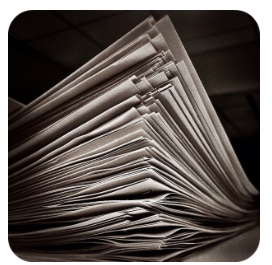 The 2010 Dodd-Frank financial reform act stands as one of the most complicated pieces of legislation ever devised. The law includes more than 22,000 pages of rules, which is equivalent to about 15 copies of Tolstoy’s epic novel War and Peace. These guidelines tell banks how much money they must set aside, how they can advertise, what sort of investments they can make, and many other stipulations and requirements.
The 2010 Dodd-Frank financial reform act stands as one of the most complicated pieces of legislation ever devised. The law includes more than 22,000 pages of rules, which is equivalent to about 15 copies of Tolstoy’s epic novel War and Peace. These guidelines tell banks how much money they must set aside, how they can advertise, what sort of investments they can make, and many other stipulations and requirements.
As you can imagine, keeping track of all those regulations takes a lot of work. That’s why in the years since the 2008 financial crisis banks have hired tens of thousands of employees to ensure that staffers stick to the rules. What’s more, federal agencies have also brought in thousands of their own watchdogs to keep an eye on banks. As a result of these changes, many financial institutions now operate similarly to utilities. Not only must they closely follow legal guidelines about how they do business, but they also face regular questions about their practices from government observers. Dealing with all this red tape has greatly increased costs as well: in 2013 the six largest banks spent at least $70.2 billion on compliance with regulations, up from $34.7 billion in 2007.
All these factors have led to an uneasy relationship between bankers and the regulators who watch over them. For instance, at a recent Barclays meeting executives showed a pair of pictures that illustrated how each group thought of the other. The first picture represented the bankers as a pack of Wild West cowboys. Then to show how bankers felt about regulators, the executives revealed a picture of nuns holding guns. The idea is that compliance workers are seen as strict but powerful while bankers are seen as mavericks who are difficult to control. These conflicting viewpoints often lead to tension between the two groups. But bankers aren’t the only people who don’t like the Dodd-Frank act. President Trump has repeatedly said that he intends to roll back the bill’s regulations. On the other hand, the recent outcry against Wells Fargo’s deceptive practices could show that regulation is needed now more than ever before. What do you think?
Questions:
- What are the benefits and drawbacks of regulating the banking industry?
- Can the tension between bankers and regulators be eased in the future? How can companies or the government accomplish this?
Source: Kirsten Grind and Emily Glazer, “Nuns With Guns: The Strange Day-to-Day Struggles Between Bankers and Regulators,” The Wall Street Journal, May 30, 2016. Photo by Jenni C.
